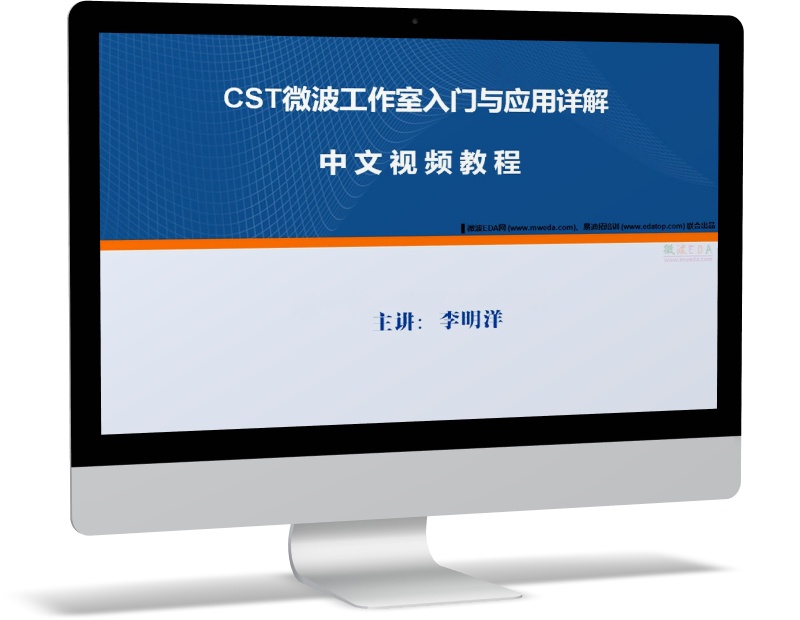CST EMS高压开关仿真  关于选择boundary condition和background material的问题
cst高压开关仿真 关于选择boundary condition和background condition的问题
最近用cst在做有关高压开关的仿真,现在有个问题想求教各位大大,对于这类问题,应该选用哪一类的boundary condition和background condition比较合适?
关于boundary condition 我每个都有尝试过,但是不知什么原因在我在选择open和open add space都会自动跳到tengtial eih去,有人知道为什么吗? 高压开关我选用的electrostitic solver用于冲击电压 和low frequency solver 用于50hz工频测试。
在background condition上,我觉得变化不大,比如我设定距离从2000mm到5000mm 得出的基本都是相同的曲线,但是设置过小的话好像出现很大的值,不知道background condition设置有没有什么讲究
仿真软件的任何参数都必须和实测环境对应,你都不说你的开关工作的实际环境,别人怎么知道该用哪种边界条件呢?
我没看到CST里有background condition这个名词,请注意描述的准确性。
如果有问题,请学会第一时间查找软件的帮助文件。
CST EMS帮助文件《Boundary Conditions - Boundaries》、《Background Properties》
另外,描述问题请确定别人能够从你的文字中理解你想要表达的意思,并不是所有人都用过EMS,也不是所有人都懂得低频仿真的相关知识。
"tengtial eih"不知所云……,不知道你说的是什么情况。
“比如我设定距离从2000mm到5000mm 得出的基本都是相同的曲线”,什么距离?什么曲线?
“但是设置过小的话好像出现很大的值”,“小”是什么参数设置到多小?“很大的值”是什么参数出现多大的值?
谢谢斑竹提醒
关于
1.我就想知道模拟高压低频50Hz或静态高压的话 应该选用哪种Boundary Conditions 因为我help文件也看了 也没看出个所以然
2.打错了 不是background condition 而是backgroud Material
3.tengtial eih应该是tengential e h or j
3.我这里的2000mm到5000mm是backgroud Material内的surrounding space的距离
4.小的范围大概surrounding space小于500mm 就会有很大的场强出现
要仿真高压开关电弧?使用六氟化硫?
可新建背景材料,输入介电常数等参数即可。
软件能模拟放电过程吗?很是怀疑,但肯定不是50Hz。
边界条件取决于你的实物的工作环境,比如说,如果开关放在金属屏蔽环境内,可以考虑Electric或者Conducting Wall;如果是开放环境,可以考虑Open。这个你并没有相关的描述。
背景材料可选的只有两种,Normal(空气)或者PEC,依据你的开关的实际工作环境而定,这一点你也没有相关的描述。
不了解EMS中Open/Open Add Space的设置参数,没有建议。
Surrounding Space的解释请参考CST EMS帮助文件《Background Properties》。这个参数大小会影响网格划分,这一点你没有相关的描述。
对仿真高压开关
可以模拟放电过程 用electrostatic solver就可以了 50hz的我是用于工频耐压测试的仿真
因为以前做过基础的球球间隔的放电 用electrostatic solver模拟的结果很非常符合schwaiger的计算结果
但是我把同样的boundary conditions用于我现在高压开关 觉得有点问题 结果不是很理想
谢谢斑竹提醒 我再次补充下
高压开关属于罐式sf6密封开关
封闭的在sf6内的 外部绝缘的话 内层是fiberglass 外层是composite shed
这种情况下我选用一般normal
还是不能完全确定你的模型的结构,是不是开关放在一个罐子里,罐子有两层材料,里层是碳纤维外层是复合介质,罐子是中空的?如果是,背景材料就是Normal,罐子最好建模。罐子如果放置在开放环境的话,边界可以考虑Open。
对 你如你所说的
一个空心的罐子 开关在封闭的内部并在封闭的内部充满sf6气体 然后使用的是2种不同的solver 一种是electrostatic solver做冲击高压的仿真
另一个low frequency solver 做50hz工频耐压仿真
现在最大的问题是我那个boundary condition怎么选 应该属于哪一类
内部充满SF6?如果SF6的Permittivity和Permeability不等于一的话,你可能得自定义背景材料的属性。
边界还有问题?罐子是放在开放环境么?是的话,Open;不是的话,Electric。
sf6材料设定没问题
但是边界的话 罐子是放在室内或者室外的(室内的话空间也远大于罐子本身,所以我也认为应该属于open)但是我设置open的话 在运行仿真时会说我边界无效 自动改成tengential,我不是很明白什么原因。还想知道下open, open add space,tengential,electric之间的区别
EMS的帮助文件已经把每种边界的功能和适用条件说得挺清楚了,我不知道为什么小编还是“没看出个所以然”。
Open: Operates like free space. This boundary condition type is available for the hexahedral electrostatic, magnetostatic and thermal solvers.
Open (add space lf): Similar to the open boundary condition, with some extra space added between structure and applied boundary condition. This boundary condition type is available for the hexahedral electrostatic, magnetostatic and thermal solvers.
Tangential: Forces the normal components of the electric, magnetic or current field (depending on your application) to be zero at the boundary. For all magnetostatic or magnetoquasistatic applications tangential boundary conditions correspond to electric boundary conditions. For all electrostatic or electroquasistatic applications they correspond to magnetic boundary conditions. This boundary condition type is available for the electrostatic, magnetostatic stationary current and thermal solver.
Electric: Operates like a perfect electric conductor, where the tangential components of electric fields and the normal components of magnetic fluxes are zero. This means that electric fields are normal to the boundary and magnetic fluxes are parallel to the boundary. For all magnetostatic or magnetoquasistatic applications electric boundary conditions correspond to tangential boundary conditions. For all electrostatic or electroquasistatic applications they correspond to normal boundary conditions. This boundary condition type is available for all EMS solvers.
CST EMS帮助文件《Boundary Conditions - Boundaries》。
如果小编耐心阅读EMS帮助文件里每个Solver的Overview,每个文件里都有Boundary的说明。小编你之前的描述从来没有说明过“在选择open和open add space都会自动跳到tengential去”这种情况发生在使用哪个solver的情况下(electrostitic solver或low frequency solver)。(小编也不说清楚是哪个Low Frequency Solver)
CST EMS帮助文件《Electrostatic Solver Overview》:
The electrostatic solver features open boundary conditions. These help to reduce the number of mesh nodes, when problems in free space are simulated.
CST EMS帮助文件《LF Frequency Domain Solver Overview》:
Currently the LF frequency domain solver does not support open boundaries.
CST EMS帮助文件《LF Time Domain Solver (MQS) Overview》:
Currently the magnetoquasistatic solver does not support open boundary conditions.
我搞不清楚你到底要模拟什么地方的场?难道封闭开关外部的场你也关心吗?罐体材料内部的场你也关心吗?
其实你不就是关心开关里六氟化硫气体环境中的场分布嘛。所以你的计算边界就是PEC就OK了,别Open了,那应该不是你关心的地方。
因为罐式sf6的高压开关上半部分是套管 这部分的内部沿面和外部沿面场强都是我要关心的
谢谢斑竹的回复~~ 相当感激
我看好看到你们的帖子,我现在正在做跟以上你们讨论的有点类,但是我是菜鸟,我想问下background material 和boundary conditions 在同一个计算里面都要设置的,还是只需要这只一个?
还有就是那个开关是中空的,然后罐头在最外层, 为什么小编建议罐头也要建模?可不可以开关建模然后设置background material 为normal就是空气,,,可不可以呢? 我不是很懂这方面的,所以想找你们探讨一下,,,主要我的模型跟你们讨论的很相似,也是中空,然后充满sf6 外围是个罐头,,,,
希望有人回帖。拜托了





